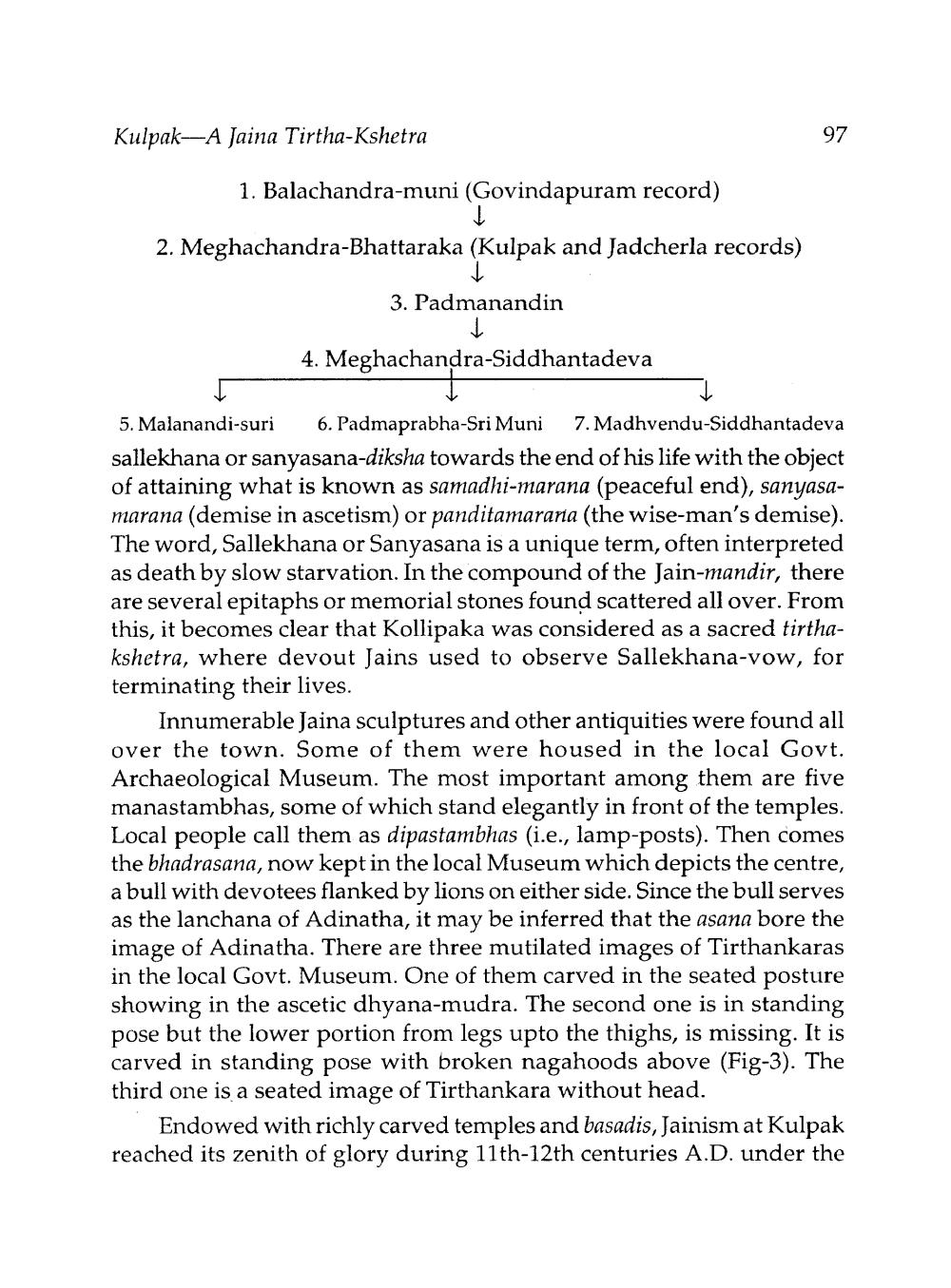________________
Kulpak--A Jaina Tirtha-Kshetra
97
1. Balachandra-muni (Govindapuram record)
2. Meghachandra-Bhattaraka (Kulpak and Jadcherla records)
3. Padmanandin
4. Meghachandra-Siddhantadeva
5. Malanandi-suri 6. Padmaprabha-Sri Muni 7. Madhvendu-Siddhantadeva sallekhana or sanyasana-diksha towards the end of his life with the object of attaining what is known as samadhi-marana (peaceful end), sanyasamarana (demise in ascetism) or panditamararia (the wise-man's demise). The word, Sallekhana or Sanyasana is a unique term, often interpreted as death by slow starvation. In the compound of the Jain-mandir, there are several epitaphs or memorial stones found scattered all over. From this, it becomes clear that Kollipaka was considered as a sacred tirthakshetra, where devout Jains used to observe Sallekhana-vow, for terminating their lives.
Innumerable Jaina sculptures and other antiquities were found all over the town. Some of them were housed in the local Govt. Archaeological Museum. The most important among them are five manastambhas, some of which stand elegantly in front of the temples. Local people call them as dipastambhas (i.e., lamp-posts). Then comes the bhadrasana, now kept in the local Museum which depicts the centre, a bull with devotees flanked by lions on either side. Since the bull serves as the lanchana of Adinatha, it may be inferred that the asana bore the image of Adinatha. There are three mutilated images of Tirthankaras in the local Govt. Museum. One of them carved in the seated posture showing in the ascetic dhyana-mudra. The second one is in standing pose but the lower portion from legs upto the thighs, is missing. It is carved in standing pose with broken nagahoods above (Fig-3). The third one is a seated image of Tirthankara without head.
Endowed with richly carved temples and basadis, Jainism at Kulpak reached its zenith of glory during 11th-12th centuries A.D. under the




